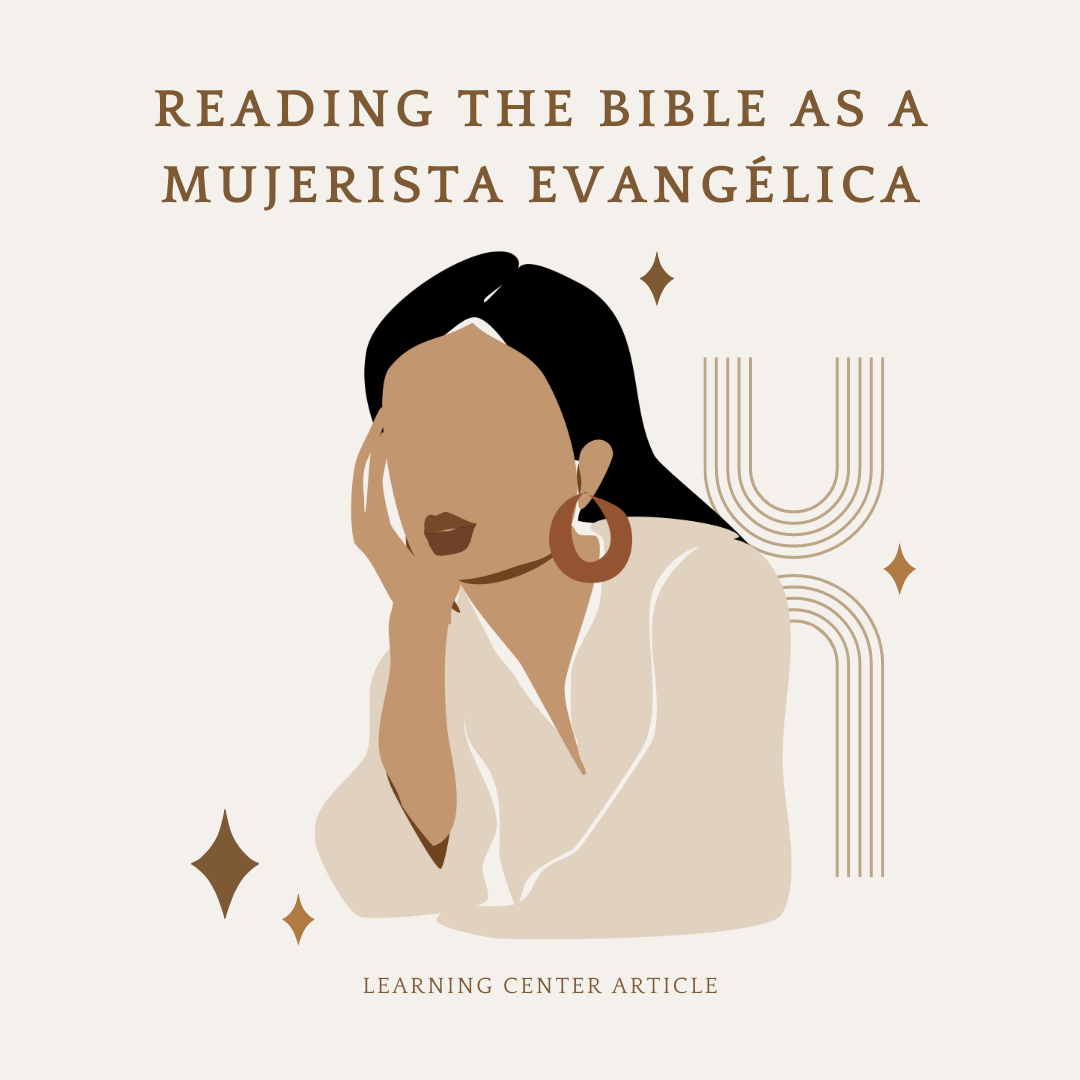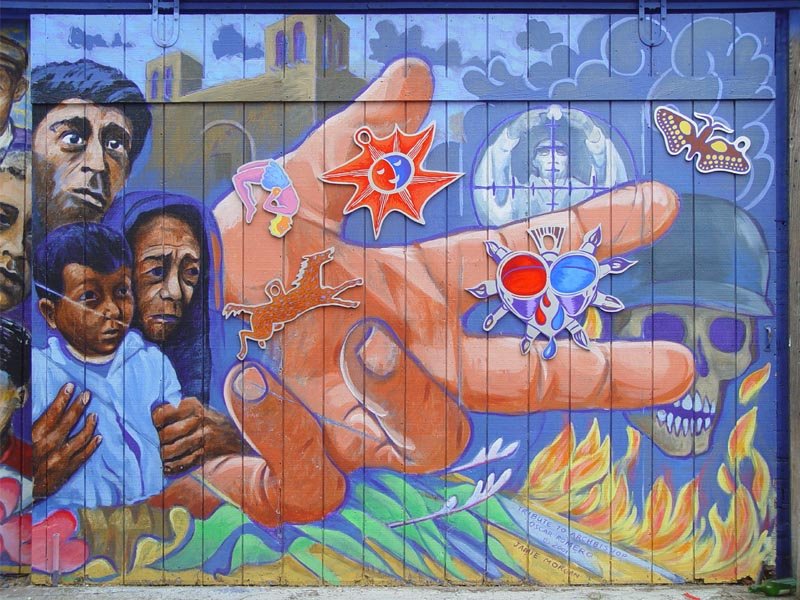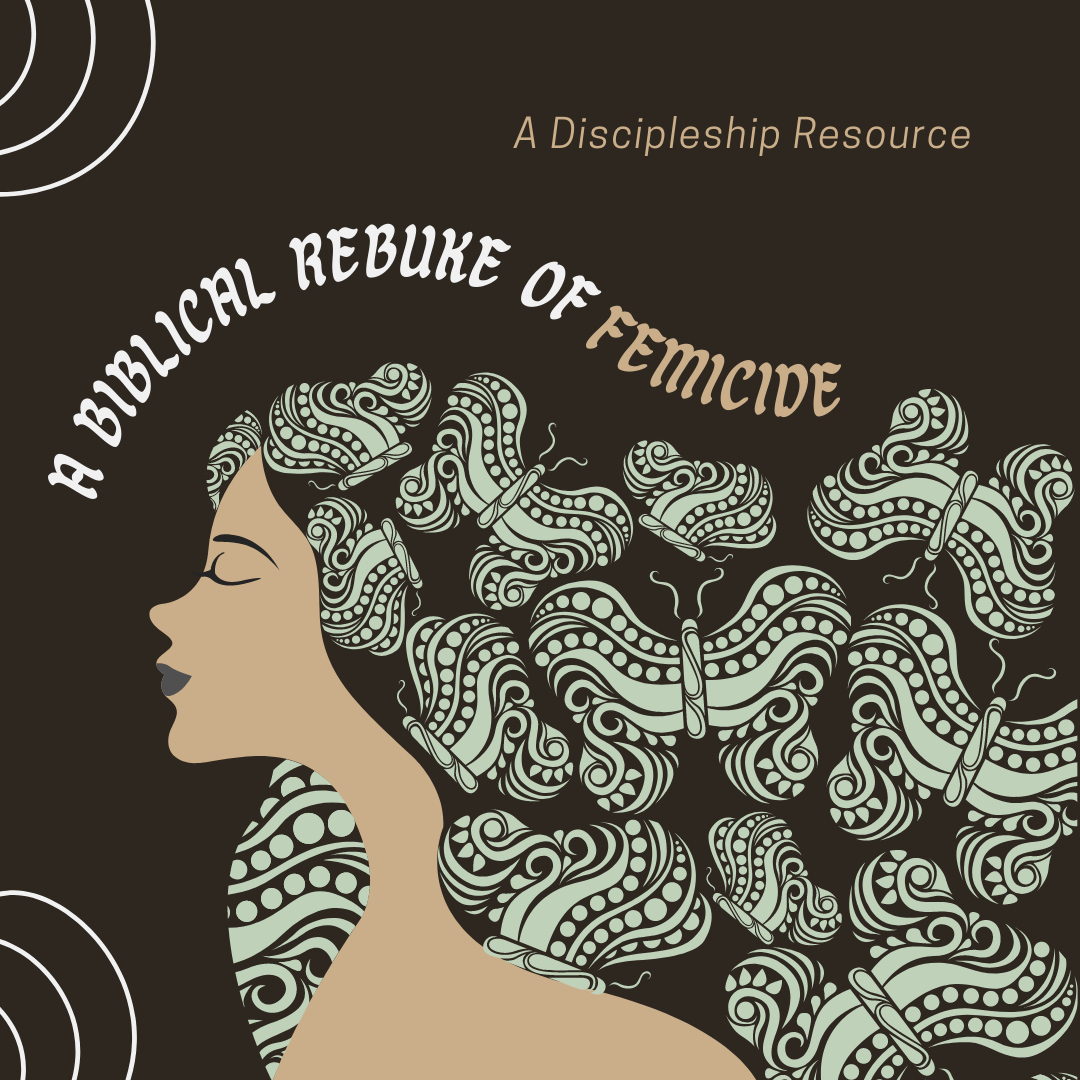Biblical interpretation is a deeply personal task. Not only does a reader attempt to make sense of the world within and behind the biblical text, but their own presuppositions must be confronted when deciding what a passage means and how it will be appropriated[1] for their context. For Christians who regularly dissect Scripture, its interpretation and application are both a challenge and a reward.
As I embarked on my academic journey in theological education, I couldn’t quite pinpoint why I was making certain interpretative choices—it just came naturally. It wasn’t until I began learning about “other” perspectives that I realized all of us—regardless of age, ethnicity, or gender—were making choices that were uniquely a combination of our culture, background, and experiences. I, too, missed things in the text that my sisters and brothers of other ethnicities caught. I was enamored by the way that each of our varied perspectives contributed something to the way a passage of Scripture was understood.
Through my learning of “other” voices, I was able to find the words describing the interpretative choices that came naturally to me. During this time, our hermeneutics class read through Santa Biblia by Justo González. I had already read González’s Mañana on my own and resonated with so much of it. It felt strange, however, to read things that resonated personally within academic spaces. It was a stale attempt to analyze “objectively” when so much of my experience was intertwined with what we were learning. And perhaps it was a burden I placed on myself, attempting to remove myself from the material so I could analyze it the same way my White classmates were analyzing it, but I did not realize at that moment that my detachment was a form of protection.
Then came the day of class. As I was sitting in my seat, I remained silent. Everyone started talking about what they found interesting in their reading of the material. “I understand where this hermeneutical choice comes from, but I personally don’t know how I feel about it,” one classmate said. “It’s not something I would choose to do. I guess I’m still processing it.”
As my classmates continued to discuss, my professor read the uncertainty on my face. He looked at me, well-meaning, and he asked, “Michelle. What do you think?”
What do I think? What do I think? As I listened to my classmates analyze Santa Biblia in a very detached, academic way, my only thought was what came out of my mouth.
“I don’t know what to think when everything González describes—exile, marginality, in-betweenness—has been my experience.”
There was a lingering silence after I spoke. All this talk about the “pros” and “cons” of Latina/o interpretation, and I think my classmates realized they were analyzing the “pros” and “cons” of my very lens. As the only person of color in my class, I didn’t know what to think—I only knew what I felt. I felt exposed, but it was a discussion I had no choice but to engage in.
This is what I mean when I say biblical interpretation is deeply personal. We must be willing to admit that each one of our lenses comes with pros and cons, but we can allow it to grow our understanding of Scripture. Learning about mujerista and Latina evangélica theology allowed me to find words to articulate the interpretative choices I make when studying Scripture.
What is mujerista theology?
Coined by Cuban American and Roman Catholic theologian Ada María Isasi-Díaz, mujerista theology finds its roots in the struggles of Latinas[2] specifically in the United States. Isasi-Díaz felt feminist theologies did not adequately represent the experiences of women of color, nor did feminista theology formed in Latin America adequately encompass the unique experience of Latinas in the United States. Isasi-Díaz makes clear that mujerista theology is not exclusively for Latinas but from Latinas, inviting all to look through the lens in which Latinas theologize.[3] In her book of essays titled Mujerista Theology, Isasi-Díaz includes personal stories and observations about Latinas y sus luchas, their struggles, in life. Latinas in the U.S. often face a number of shared issues such as “bilingualism, multiculturalism, popular religious faith, marginality, poverty, colonization, migration, and cultural alienation.”[4] Mujerista theology seeks justice on these issues for the Latina community at large.
An essential tenet of mujerista theology is the value of lo cotidiano. Lo cotidiano is the shared experiences of everyday life. Isasi-Díaz unpacks the complexity of this term but essentially recognizes it is filled with subjectivity that helps describe the processes of Latina women in their lives.[5] Mujeristas know God cares deeply about every aspect of your life—from the clothes you choose to wear to the food you eat. Part of this stems from the way our madres, abuelitas, comadres, y amigas, who often have no formal theological education, recognize God working in their day-to-day lives. These faith traditions passed down from our Latina matriarchs, often named abuelita theology, work in tangent with mujeristas and how they understand their faith.
Mujerista theology is often criticized for the lack of significance Scripture holds in the lives of Catholic Latinas. The dominant influence of Catholicism from conquistadores resulted in a critical view of the Bible in the lives of Catholic Latinas, and rightly so, as it contributed to their oppression and struggle. However, Isasi-Díaz recognized the growing emergence of Latina evangélicas where the Bible became more central, and therefore, the urgency for mujeristas to articulate a biblical interpretation.[6]
What is Latina evangélica theology?
Latina evangélicas reaffirm many of the values of mujerista theology but acknowledge differences from a Protestant perspective. Loida I. Martell-Ortero, Zaida Maldonado Pérez, and Elizabeth Conde-Fraizer sought to build upon these central values in their book, Latina Evangélicas: A Theological Survey from the Margins. They recognize the complexities of varying theologies even within the Latina community. Martell-Ortero is nuanced in her naming of evangélica, stating that it does not necessarily mean the English equivalent “evangelical,” but instead embodies Latinas coming from mixed faith traditions who understand themselves to be people who preach the gospel, el evangelio.[7] This book seeks to honor contributions made by both feminista and mujerista theologies.
Latina evangélica theology distinguishes itself with its emphases on the Holy Spirit, salvation, and Scripture. First, evangélicas see the Holy Spirit as the one who “saves, heals, affirms, calls, empowers, and transforms persons and communities.”[8] Second, evangélica theology seeks to describe salvation in a multifaceted way, stating that salvation is an “incarnational reality encountered within the context of lo cotidiano, rather than solely as a transcendent reality that helps one ‘go to heaven.’”[9] That means that evangélicas care about the “here and now,” the present reality on earth, and it is an outworking of one’s salvation (James 2:14-26). Finally, Scripture is a key tenet for evangélicas. The authors of Latinas Evangélicas weave in Scripture to affirm the testimony of their theological understandings, both by experience and the text itself.
What is a mujerista evangélica?
To name oneself is a powerfully biblical act.[10] I have decided to bridge mujerista and Latina evangélica theology by naming my methodology mujerista evangélica biblical interpretation for a few reasons. One, I want to pay tribute to the way Isasi-Díaz contributed to my theological understandings. Many second-generation Latinas in the United States began their faith journey in Catholicism as I did. My theology is heavily influenced by the beauty of ritual and order. Since much of Mexican culture is interwoven with Catholic religion, this piece is significant in my cultural and theological upbringing.
Two, the power of naming my theology as mujerista reaffirms the necessity to seek justice for women of color who live in marginalization. Justice is an explicit biblical theme, from the laws given to Israel for proper treatment of the foreigner, to Jesus’ advocacy of the marginalized—the poor, widows, and orphans. When I hear mujerista, I hear an empowered word describing the journey to liberation from internalized oppression.[11] It gives a name and voice to the struggles that Latinas experience daily.
Many of the Latinas I know see themselves as bridge builders. Our brown bodies do not fit in the Black and White binary often created in the conversations surrounding racial justice. As Isasi-Díaz says, this theology is not for us but from us. The end goal is to see the beautiful diversity of God’s kingdom from every nation, tribe, and tongue (Revelation 7:9), but that means feeling valued and elevated in our own communities of faith. My methodology embodies “both/and” rather than “either/or,” because it seeks liberation in a way that names Latinas and their contributions, but also in a way that seeks liberation for all those experiencing marginalization.
I include evangélica in my naming because I am Protestant. The Word of God is meaningful in my life, especially as someone who studies Scripture academically. Although Isasi-Díaz insisted upon the lack of biblical authority in the lives of Latinas, she still contributed incredible insight about themes of exile from passages like Psalm 137.[12] Now, voices that are distinctly evangélica are needed to represent our perspective in the field of biblical interpretation. It is a field that is predominantly White, male, and growing increasingly less confessional in Christian faith. Scripture can be a powerful tool for mujerista evangélicas.
A Final Word
I hope to be transparent in my treatment of mujeristas and Latina evangélicas. There is so much more nuance and complexity, as well as beautiful descriptions of the Latina faith, found within these two books. It is too much to describe in one article, but it is worth the work that Latinas see themselves in the world of academia. It affirms, slowly but surely, work is being done and our voices are being heard. And, frankly, much more is out there, on the ground, in the grassroots of faith communities. The goal has always been for these theologies to enable a praxiological component for Latinas. Interpretation does not stop there, and its appropriation should result in constructive change.[13] Mujerista evangélicas have a dedication to completing this work en conjunto, together, on the ground.
Just as Cuban theologians like Ada María Isasi-Díaz, Justo González, and other Latina theologians from varying Hispanic heritages present distinctive viewpoints that affect their interpretative choices, my Mexican heritage also affects the way I interpret. Many second-generation children born and raised in the U.S. share similar understandings.[14] I relate to experiences of exile, but not in the way some Latinas experience by actual displacement of migration. I learned how to travel between the spaces of Mexican and American culture, between school and home, between English and Spanish. I speak Spanglish and often use Mexican idioms that my other Mexican friends also grew up saying. I went to quinceañeras y fiestas con mi familia, and I cleaned on Saturday mornings con mi mama to Cómo Te Voy a Olvidar by Los Ángeles Azules. I took Spanish in high school as an easy “A” and quickly discovered the Spanish taught to us was not the Spanish I learned in my Mexican household. Second-generation Mexican American children bond over these experiences and much more. My mujerista evangélica lens hopes to add a voice to the dearth of work, specifically in Old Testament interpretation from a second-generation Mexican daughter. I hope my lens contributes a refreshment of the Scriptures, one that makes you fall in love with Jesus over and over again.
about MICHELLE NAVARRETE
My passions stem from within the Old Testament, focusing on biblical themes and social ethics through an interdisciplinary approach. As a second-generation Latina who lives in between the Mexican and American cultures, my faith inevitably intersects with my culture and experiences. I use storytelling in my academics as a way to engage my audience and cultivate connection. People are part of my passion and I want my work to reflect that. Currently located within the Latino community of West Chicago, I am pursuing my master’s in Old Testament Biblical Exegesis at Wheaton College, and I intend to pursue doctoral studies after my time at Wheaton. During my time at World Outspoken, I hope that my contributions will renew faith perspectives in a way that mobilizes restoring change within communities.
Footnotes
[1] When using the word “appropriation,” I mean to convey that a passage may be appropriated time and time again depending on the particular scope and context. When using the word “application,” I mean to convey the act of applying the appropriated text for the reader’s specific singular context. For more on this language of “distantiation,” “contextualization,” and “appropriation,” see Bungishabaku Katho, “African American Biblical Interpretation” in Scripture and its Interpretation: A Global, Ecumenical Introduction to the Bible.
[2] For more on the nuances between “Hispanic,” “Latina/o,” and “Chicana/o,” see the discussion in Robert Chao Romero’s Brown Church.
[3] Ada María Isasi-Díaz, Mujerista Theology (New York: Orbis Books, 1996), 1-2.
[4] Loida I. Martell-Otero, Zaida Maldonado Pérez, and Elizabeth Conde-Frazier, Latina Evangélicas: A Theological Survey from the Margins (Eugene, OR: Wipf and Stock Publishers, 2013), 4.
[5] Isasi-Díaz, Mujerista Theology, 67.
[6] Isasi-Díaz, Mujerista Theology, 149.
[7] Martell-Otero, Maldonado Pérez, and Conde-Frazier, Latina Evangélicas, 8.
[8] Latina Evangélicas, 9.
[9] Latina Evangélicas, 10.
[10] “To name oneself is one of the most powerful acts a person can do,” Mujerista Theology, 60; “Scriptural texts attest to the power of naming,” Latina Evangélicas, 3.
[11] Mujerista Theology, 60-61.
[12] Ada María Isasi-Díaz, “By the Rivers of Babylon” in Mujerista Theology, 35-56.
[13] M. Daniel Carroll R., “Latino/Latina Biblical Interpretation” in Scripture and its Interpretation: A Global, Ecumenical Introduction to the Bible (Grand Rapids: Baker Academic, 2017), 315.
[14] I have the privilege of working with second-generation Mexican American high school students that convey extremely similar upbringings and familiarities.
Articles like this one are made possible by the support of readers like you. Donate today and help us continue to produce resources for the mestizo church.





